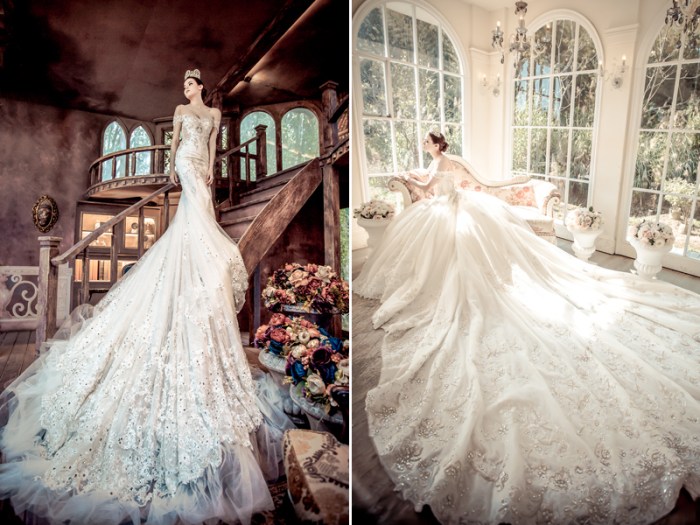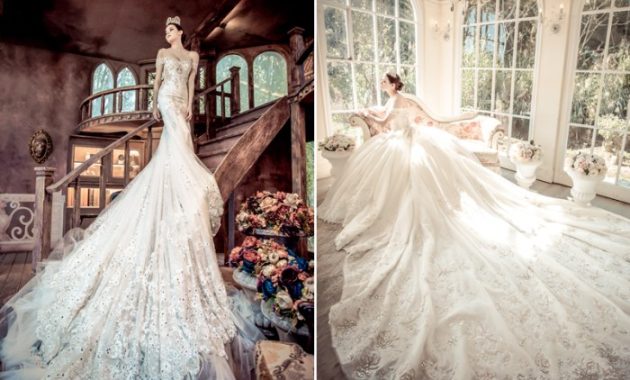Who Pays for the Wedding Dress?
Who buys the brides wedding dress – The question of who foots the bill for a bride’s wedding dress is a complex one, influenced by a variety of factors including financial situations, cultural traditions, and personal preferences. This exploration delves into the financial aspects, family dynamics, and modern trends shaping this significant wedding expense.
The Bride’s Financial Contribution
The bride’s financial contribution to her wedding dress varies greatly depending on several factors. Traditionally, the bride’s family might cover the cost, but modern weddings see a wider range of financial arrangements. Cultural norms also play a significant role. In some cultures, the bride’s family bears the entire cost, while in others, the couple shares the expense or the bride covers it entirely.
For instance, a bride from a family with strong financial resources might not contribute anything, while a bride who is financially independent might pay for the dress herself. Alternatively, a couple might agree to split the cost, each contributing a percentage based on their financial capabilities. The following table illustrates various scenarios:
| Scenario | Bride’s Contribution | Groom’s Contribution | Other Contributors |
|---|---|---|---|
| Bride’s family pays entirely | $0 | $0 | Bride’s parents/family |
| Bride and groom split the cost | 50% | 50% | None |
| Bride pays entirely | 100% | $0 | None |
| Combined family contribution | 25% | 25% | Bride’s parents (50%), Groom’s parents (0%) |
The Role of Family and Friends
Family involvement in financing the wedding dress is common. Parents, particularly the bride’s parents, often contribute significantly, reflecting their support and participation in the wedding. The level of contribution can vary based on family wealth, tradition, and the relationship between the bride and her family. In some cases, grandparents or other close relatives may also chip in.
Family dynamics heavily influence this aspect. A close-knit family with strong financial support might cover the entire cost, while a family with strained finances or differing opinions might see minimal or no contribution. Friends, although less common, may also contribute through gifts or shared expenses, especially if they are close to the bride and are aware of financial constraints.
The decision-making process within families regarding wedding dress financing often involves discussions and compromises. A flowchart visualizing this process might begin with a conversation between the bride and her parents about the budget, followed by exploration of different dress options and price ranges, culminating in a final decision on the financial contribution and dress selection.
The Influence of Budget and Dress Style
The cost of a wedding dress varies significantly depending on the style, designer, and materials. A simple, minimalist dress might cost a few hundred dollars, while a designer gown with intricate details could reach tens of thousands. The overall wedding budget directly impacts the amount allocated to the dress. Brides often set a percentage of their total budget for the dress, prioritizing other expenses as needed.
Personal preferences also play a crucial role. A bride who values a specific designer or intricate details might allocate a larger portion of the budget to the dress, while a bride prioritizing other aspects of the wedding might opt for a more affordable option. Several strategies can help brides save money without compromising style, such as buying a sample dress, choosing a less expensive designer, or opting for a less elaborate design.
| Price Range | Dress Style Examples | Average Cost | Typical Buyer Profile |
|---|---|---|---|
| Under $500 | Simple A-line, sheath, tea-length | $300 – $450 | Budget-conscious brides, smaller weddings |
| $500 – $1500 | Classic A-line, fit-and-flare, mermaid | $800 – $1200 | Mid-range budget, moderate-sized weddings |
| $1500 – $5000 | Designer gowns, intricate details, high-quality fabrics | $2500 – $4000 | Higher budget, larger weddings, specific designer preferences |
| Over $5000 | High-end designer gowns, custom-made dresses | $6000+ | Luxury weddings, discerning brides |
The Impact of Modern Wedding Trends, Who buys the brides wedding dress

Source: turbosquid.com
Modern wedding trends significantly impact who pays for the dress. Destination weddings, often requiring additional travel and accommodation costs, may necessitate a more careful budget allocation, potentially leading to shared expenses or a more affordable dress choice. Eloping, on the other hand, may result in the bride covering the cost entirely, given the smaller scale and reduced overall wedding budget.
Social media and online shopping have revolutionized the dress-buying process. Online platforms provide access to a wider range of styles and prices, influencing purchasing decisions and potentially leading to more budget-friendly choices. The changing dynamics of gender roles have also impacted wedding financing. With more financially independent brides, there’s a growing trend of self-financing or shared expenses between the couple.
Innovative financing methods, such as wedding registries specifically for the dress or crowdfunding, are gaining popularity, offering alternative ways for brides to secure funding. Layaway plans and payment plans offered by bridal shops provide flexibility for budget management.
Illustrative Scenarios

Source: praisewedding.com
Several scenarios illustrate the varied approaches to wedding dress financing.
Scenario 1: Bride’s Parents Pay: The bride’s parents, deeply invested in her happiness and tradition, decide to cover the cost of the dress, seeing it as a significant contribution to their daughter’s special day. They may have specific expectations regarding the dress style, within a pre-agreed budget.
Scenario 2: Bride and Groom Split the Cost: The couple, both financially independent, decide to split the cost of the dress equally, demonstrating shared responsibility and partnership. They might discuss their budgets and preferences to find a dress that fits both their financial capabilities and aesthetic tastes.
Scenario 3: Bride Pays Entirely: A financially secure bride prioritizes her independence and pays for the dress herself, reflecting her self-sufficiency and personal style. She might meticulously plan her budget, shop strategically, and choose a dress that perfectly reflects her vision and financial capabilities.
Scenario 4: Friend Gifts the Dress: A close friend, aware of the bride’s financial constraints, gifts her the dress as a gesture of love and support. This selfless act reflects a strong friendship and a shared understanding of the significance of the wedding.
Q&A: Who Buys The Brides Wedding Dress
What if the bride and groom have vastly different budgets?
Open and honest communication is key. They should discuss their financial situations and expectations early on, potentially compromising on a dress that fits within a mutually agreed-upon budget.
Can a bride return a wedding dress after the wedding?
Most bridal shops have strict return policies, often not allowing returns after the wedding. It’s crucial to check the shop’s policy before purchase.
What if the bride doesn’t like the dress after it’s been purchased?
Depending on the shop’s policy and the timeframe, alterations may be possible. However, significant changes might not be feasible or affordable. Careful consideration before purchase is essential.
How can a bride find affordable wedding dresses?
Consider sample sales, off-the-rack options, consignment shops, or online retailers. Setting a realistic budget and prioritizing style preferences can also help.

